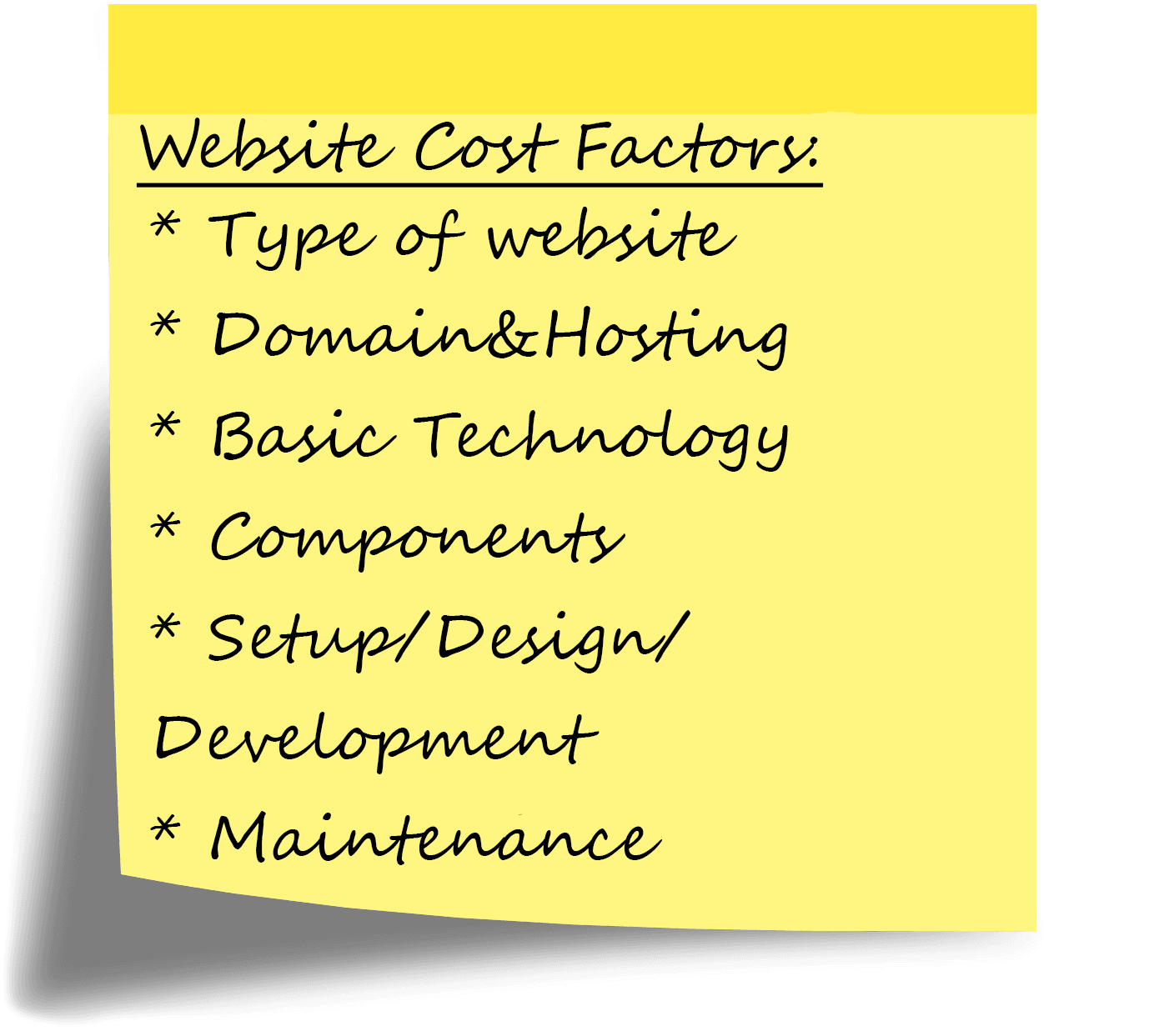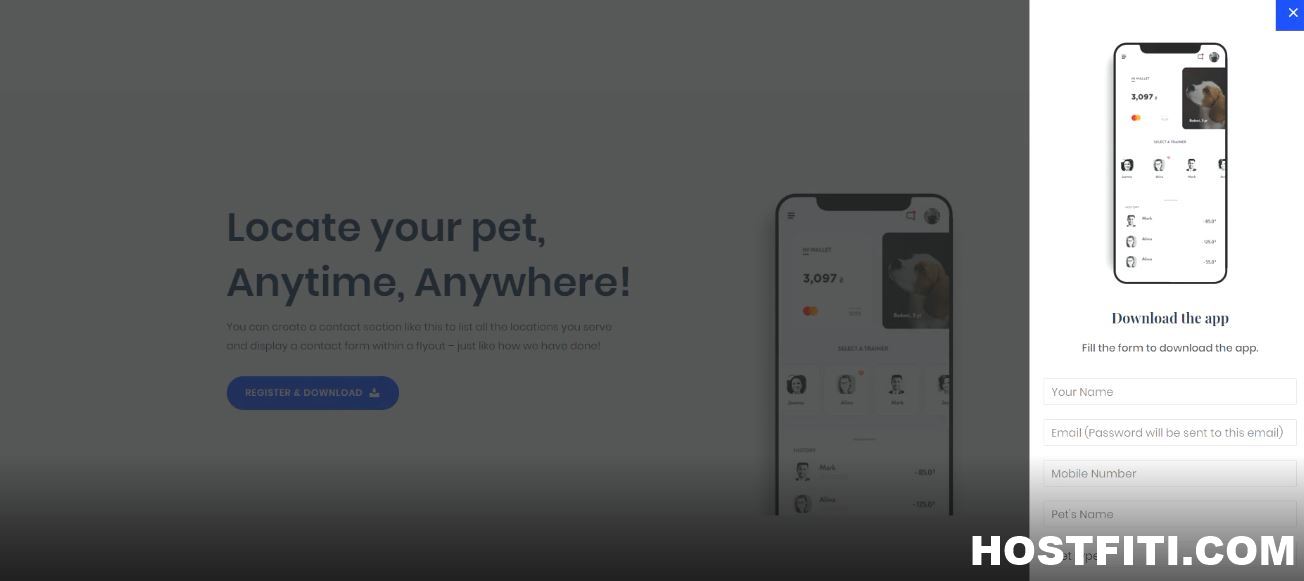How much does a website cost in Kenya? How much is too much for a website? These are probably some of the first questions for anyone who considers establishing their own web presence. Which has now become a necessity for every business. After all, your potential customers are online most of the time.
Since having your own website has become a very common thing, you would think that it would be easy to answer the question of how much does a website cost. It turns out that the exact numbers are very hard to come by.
The price of each website is unique. It depends on a lot of factors. To give you a better understanding of what to expect we will try to help you create a website cost blueprint for yourself.
In this piece we’ll:
- Determine how much a website would cost and give you rough outlines for common options.
- Discuss the costs of the different website components in detail. That way, you can pick and choose options according to your own requirements and budget.
- Try to give you a clear idea about what kind of price to expect for the website you have in mind.
Let’s get cracking!
What Does the Cost of a Website Consist of?
As a first step let’s look at everything that costs money when creating your own website and how that translates into final costs in different scenarios.
Website Cost Factors
While the price of a website is highly unique, some things are universal in every website creation process and determine the cost of a website:

- Type of website — Websites are not made equally. The price is depends highly on the type of site you are building. A simple blog is easier to set up than an online shop, a small business website has fewer pages than an enterprise site.
- Domain & Hosting — Every web presence needs a home and an address you can reach. In terms of websites, that’s a server and a web domain. You can either get those yourself or acquire them as part of a website service. We have written an extensive article on the cheap and best web hosting companies in Kenya. You can read it here.
- Basic technology — All websites are powered by some kind of software in the background. This can be pure HTML or PHP files, a content management system like WordPress or something else. Depending on your choice, costs will differ. Some web design technologies are easy to implement thus cheaper to implement while others are much more complex hence are associated with high prices. For instance, some websites have real-time capabilities, super fast and can be used by more than a million users concurrently, this types of websites are powered by modern, reliable and stable technologies. Acquiring such technologies for a small website might be unreasonable, but for a large web app, the advantages are clear.

- Components — The basic technology is not everything. Depending on what functionality you need, you might need additional plugins, apps or third-party services, many of which will cost money.
- Setup/Design/Development — Building a website is not just about acquiring the parts, they also need to be assembled. You can do that yourself or hire someone else to do it. If you do the latter, you will have to pay for that.
- Maintenance — Additionally, it’s not just enough to build a website, you also need to keep it running. Ongoing maintenance (including marketing) is also a part of your website cost blueprint.
As you can imagine, for many of the factors above, you can either invest money to have someone do those for you or the time to learn to take care of those yourself. Depending on your capabilities, this will also change the final cost of a website. Here are a few scenarios and the final prices of the website.
Option 1: Do Everything Yourself – About KSH 4,000/Year
The cheapest way is to create a website all by yourself.
“But I can’t code,” you may think.
No problem!
The solution is to use a website builder. These are hosted solutions that let people without technical knowledge design websites without coding. Using a drag-and-drop interface, you can create a website you want. Website builders usually charge on a monthly or yearly basis and offer different plans with more or fewer features.
Using a website builder, makes it easy to transform bland pages into attractive ones. Website builders offer dozens of templates, making it easy to tweak the colors and font styles on your site. Templates also allow you to place graphics and other design elements exactly where you want them and save you lots of time, better used in marketing your business.
Here are some advantages of using a website builder:
- Reduced Cost – Using a website builder reduces the cost of developing and maintaining a website significantly as they have taken care of hosting, setup, maintenance and additional components.
- No Coding – With a website builder, one doesn’t need to learn HTML or any other type of website coding. Choose any of the templates to develop a website that fits the business perfectly.
- High Quality Graphics – A website builder gives you access to high-quality website graphics which can be used at no additional cost. These graphics can be used to enhance the website pages thereby making the site more attractive for visitors.
- Ease of use – Almost all website builders offer a drag and drop facility, which means the user need not write a new code every time for every change he wishes to make to the website. It thus gives the user the ability to upgrade content and images very easily.
- Increased functionality – Website builders enable you to add any functionality that you want such as ecommerce to your website at minimal cost (you just have to sign up for a plan that has the functionality that you want) compared to hiring a web developer.
- 24/7 Uptime and Support –At the same time, website builders come with all the convenience of a commercial product. That means, you have someone to turn to in case of problems and everything comes from one place. Therefore, you are less likely to run into technical problems.
If you are interested in making a website on your own, you can learn to do so here.
Option 2: Hire a Web designer – KSH 15,000 to KSH 100,000 per Website
Of course, if you have the budget you can also hire a web designer to do all the work for you. The cost of a website is highly dependent on who you work with and how long your project takes to complete.
Majority of the web designers use WordPress (a Content Management System that now powers 32% of the websites on the internet) to develop websites. Some web design technologies are easy to implement thus cheaper to implement while others are much more complex hence are associated with high prices. A web developer who uses React to develop a website will charge more than a web developer who uses WordPress.
A standard WordPress website takes anywhere from 15 to 30 hours. The cost of having a standard website built in Kenya will range from KSH 15,000 to 100,000.
The process of website development differs depending on who you ask. Below is the general process and the price of each step:
- Gathering Information: Purpose, Main Goals, and Target Audience
This stage, the stage of discovering and researching, determines how the subsequent steps will look like. The most important task at this point is to get the clear understanding of your future website purposes, the main goals you wish to get, and the target audience you want to attract to your site. Such kind of a website development questionnaire helps to develop the best strategy for further project management. Domain and hosting is also purchased during this step.
Estimated time: from 2 to 4 days. No or minimal costs. - Planning: Sitemap and Wireframe Creation
At this stage of website development cycle, the developer creates the data that can give to a customer an opportunity to judge how the entire site will look like. On the basis of the information that was gathered together in the previous phase, the sitemap is created.

The sitemap should describe the relations between the main areas of your website. Such representation could help understand how usable the final product will be. It can show you the “relationship” between the different pages of a website, so you can judge how easy it will be for the end-user to find the required information or service if he starts from the main page. The main reason behind the sitemap creation is to build a user-friendly and easy to navigate website.
Estimated time: from 2 to 7 days. Min. KShs 3500 Design: Page Layouts, Review, and Approval Cycle
During the design phase, your website takes shape. All the visual content, such as images, photos, and videos is created at this step. Once again, all the info that was gathered through the first phase is crucial. The customer and target audience must be kept in mind while you work on a design.
Estimated time: from 2 to 7 days. Min. KShs 5000Coding
At this step, you can finally start creating the website itself. Graphic elements that have been designed during the previous stages should be used to create an actual website. Usually, the home page is created first, and then all sub-pages are added, according to the website hierarchy that was previously created in the form of a sitemap. Frameworks and CMS should be implemented to make sure that server can handle the installation and set-up smoothly.All static web page elements that were designed during the mock-up and layout creation should be created and tested. Then, special features and interactivity should be added. A deep understanding of every website development technology that you’re going to use is crucial at this phase.
Estimated time: from 2 to 7 days. Min. KShs 10,000Testing, Review and Launch
Testing is probably the most routine part of a process. Every single link should be tested to make sure that there are no broken ones among them. You should check every form, every script, run a spell-checking software to find possible typos. Use code validators to check if your code follows the current web standards. Valid code is necessary, for example, if cross-browser compatibility is important for you.
Estimated time: from 2 to 7 daysMaintenance: Opinion Monitoring and Regular Updating
What’s important to remember is that a website is more a service than a product. It’s not enough to “deliver” a website to a user. You should also make sure that everything works fine, and everybody is satisfied and always be prepared to make changes in another case. Feedback system added to the site will allow you to detect possible problems the end-users face. The highest priority task in this case is to fix the problem as fast as you can. If you won’t, you may find one day that your users prefer to use another website rather than put up with the inconvenience.
Estimated time: ongoing. Prices will vary.
In the end you will be charged approximately Kshs 18,500 for a simple website. However, this will greatly vary with the features you want and the web developer you are working with.
What are the benefits of having a website? Click here to find out.
Do you think this article will help someone? Don’t forget to share.
Subscribe to be notified about new marketing, entrepreneurship & web development posts.
Make a Professional Website using HostFiti Website Builder
Having a professional business website helps you establish credibility as a business. Make your professional website using our drag and drop website builder in minutes and make it convenient for your customers to contact you.
Starting from

